Reading about Costa Rica in either a travelogue or the Lonely Planet is one thing. Going there and experiencing this enchantingly beautiful country is totally different.

Nothing can prepare you for the incomparable lushness of this tiny Central American country, barely 51,000 sq km, situated between Nicaragua in the north, Panama in the south, the Caribbean Sea in the east and the Pacific Ocean in the west.
As you travel anywhere from San Jose, the capital, where we land, you find yourself surrounded by mountains all around you, and huge stretches of land totally covered by lush green tropical forest, the like of which I have not seen anywhere.
During our week-long stay, it became amply evident why the country was so green; at our first stop Manuel Antonio, there was torrential rainfall every afternoon, without fail, and uninterrupted for at least a few hours.
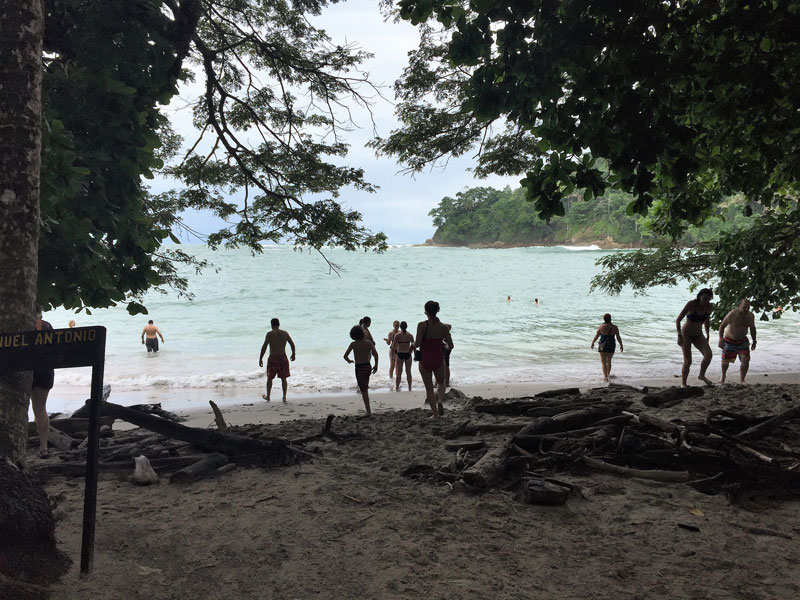
We head straight from the airport by a private van to Manuel Antonio, which is located on the Pacific Ocean and is home to the sprawling Manuel Antonio National Park.
The drive takes about three hours; our driver is absolutely courteous, friendly and helpful and the van has free Wi-Fi. Not surprisingly, the Wi-Fi password is pura vida, Spanish for ‘pure life’, a sign that we see on many hoardings across the country.
The road to the National Park is steep and narrow, bounded by heavily forested hills on one side and lovely strips of beach on the other side, which unravel as you walk through the park.
There are several trails inside the reserve and we see plenty of iguanas, white faced capuchins (monkeys) and occasionally the mantled howler monkeys prancing around the tree branches.
And what must provide a big relief to the locals as well as the tourists are the monkey bridges built overhead which allow the monkeys to cross the roads without coming down.
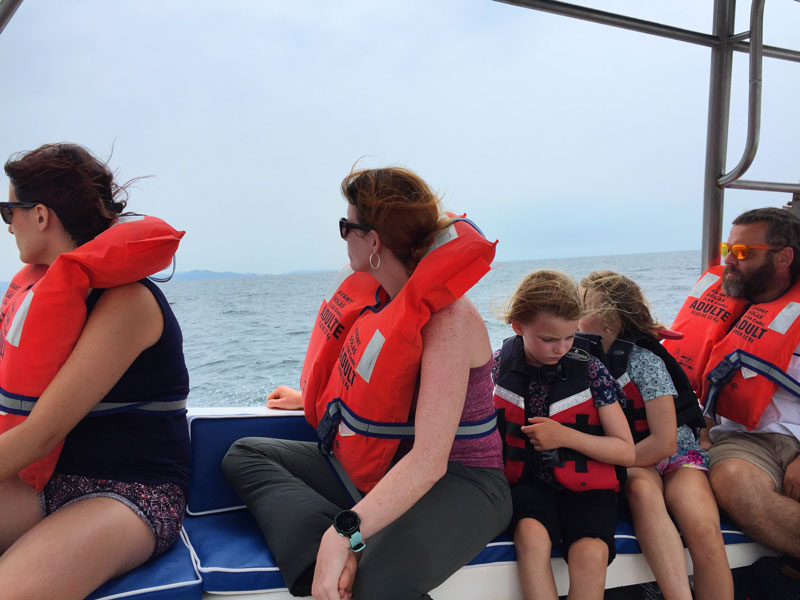
Nestling higher up in the trees are many sloths, who, we are told by the guide, come down to the ground only once in three to four days, sleeping the rest of the time.
For bird lovers, this reserve is a paradise and you can sight trogons, humming birds, pelicans and kingfishers easily as they are almost everywhere. You just have to look!
The national park, which is packed with tourists, most of them from the US, Latin American countries and Europe — we do not spot any Indians anywhere — has three gorgeous beaches; Playa Espadilla, Playa Manuel Antonio and Playa Puerto Escondido. ‘Playa’ is Spanish for ‘beach’.
The reason for the greenery is evident; torrential rain for the whole week of our stay, every afternoon.
The cool waters of the sea are a fitting reward for the long walk through the winding paths of the forest on a hot and humid day, and most of the tourists, make a beeline for the sea sooner than later.
In terms of facilities the park is well organised, there are showers and changing rooms for visitors but the huge popularity of this forest means you have to be patient and often wait in queues for your turn to use these facilities.
Our resort in Manuel Antonio — Parador Resort and Spa — has to be mentioned, both for its spectacular location and the comfort and uniqueness of its facilities. Located on a hill overlooking the deep blue waters of the Pacific, it offers real value for money, even though it’s a bit pricey at around $200 a night.
Situated in 12 acres of the rainforest, it offers you a luxurious stay; the breakfast is sumptuous, the service is good, the staff helpful, the rooms well appointed. It gives you access to a spectacular beach through a 15-minute walk down the road.
Even though we missed a few heartbeats as the lady at the Reception couldn’t find our reservation that had been made online, the advantage was being upgraded to premier rooms.
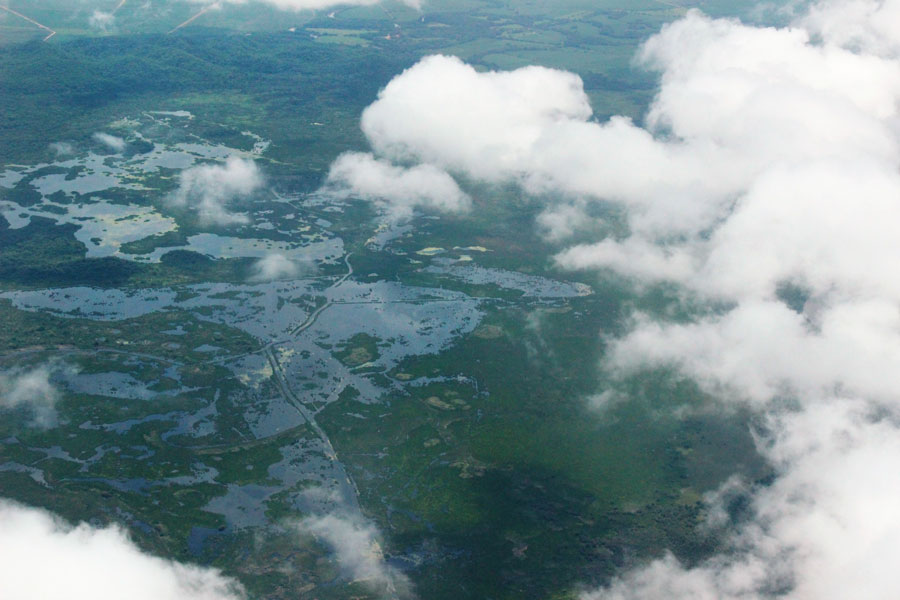
And access to these rooms was through a little elevator-type of funicular that went up at an angle of almost 60 degree! Leaving the room and returning to it each time was a lovely experience.
And the view from our room was to die for… a spectacular expanse of the Pacific through coconut palms dotted in the foreground… and right from your bed.
Our journey to the next destination we had chosen — the quiet little town of Santa Teresa is nothing short of exciting and spectacular.
First, from Manuel Antonio we take a 60-minute cab ride to the beautiful beach town of Jaco, from where we are transferred to a speed boat for a nerve-tingling hour-long journey over the Pacific at 60–80 km, and finally a 30-minute ride, most of it on a kutcha or dirt road in a van to Santa Teresa, a one street town boasting fabulous beaches for surfing.
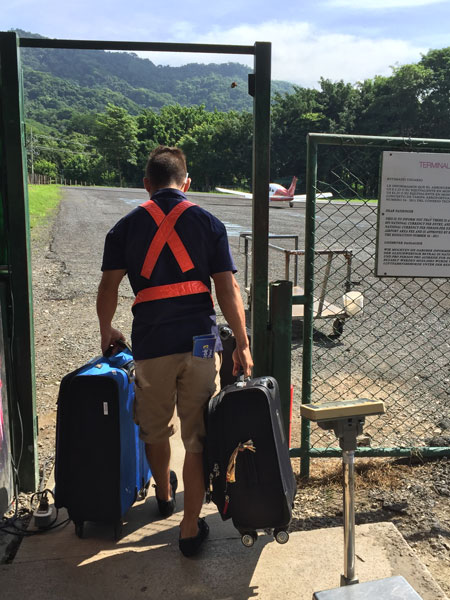
This transfer for four people costs a modest and affordable $170. We are picked up from our hotel on the dot and the most fascinating part of the journey is the seamless transfer from van to boat to van, with our suitcases being deftly and speedily packed into huge plastic bags before they are transferred on the boat.
There is no jetty to board the boat; you have to wade in ankle or knee-deep waters of the sea, depending on the tide, to hop onto the speed boat.
The Costa Ricans are friendly, courteous helpful; pura vida (pure life) seems to be the nation’s motto!
At Santa Teresa we opt for an Airbnb Property, which is a very comfortable apartment in a gated community, which is … oh, so green, once again. It comes with a fully equipped kitchen and knowing this beforehand, we have come armed with all the Indian herbs and spices, including garam masala!
It is fun to shop for lamb and chicken at the tiny store grandiosely labelled the “supermarket”, and lo and behold, my wife dishes out the perfect chicken biryani that evening. The Indian palate is satisfied, and we laze for three days in this little town which is filled with surfers armed with gigantic surfing boards before returning to San Jose.
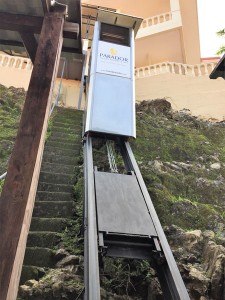
And that return is surely the stuff of dreams. We drive to a tiny airport, where there is one man… yes, literally and physically a single man… manning the entire airport.
He takes our bags, transfers them on a trolley and wheels it to the runway where two tiny aircraft — a 10-seater and 12-seater — are parked. His duty includes charging the batteries of these aircraft, which are really shuttles.
A 40-minute flight takes us to San Jose for the journey back to Mexico City, from where we have flown to Costa Rica.
Indians don’t need visa, if you have a valid US visa, and the US greenback can be used everywhere.
Costa Rica, a nation of 40 lakh people, is a costly destination, a decent meal for four in a restaurant will set you back by a $150, but the experience of this destination is worth every cent spent there.
A rare country with no army, it has many volcanoes, several of which are active and its highest mountain peak is at 13,000 ft. Though this is a Spanish speaking country, English is spoken and understood everywhere.
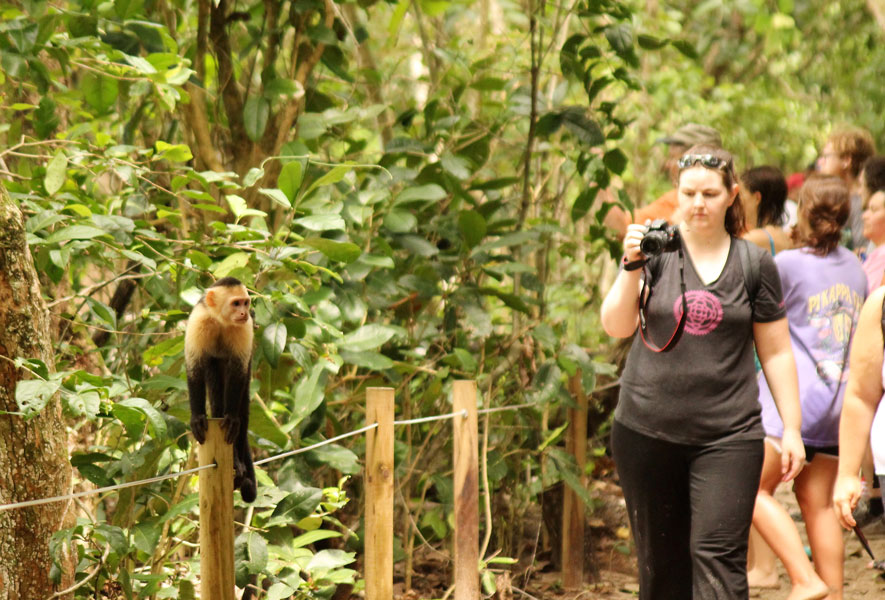
There is good scope for adventure tourism. All parks have zip lines and jungle canopy tours, surfing, sea diving, rafting, etc. The tours are well organised and the Costa Ricans are one of the friendliest people I have ever met.
Indians, who hold a valid US visa, do not need a visa to travel to Costa Rica, where the local currency is the Colon ($1 gets you 550 Colons), but you barely need to change your money, as the US dollar is accepted everywhere.
And unlike in most countries of the world, where they fleece you on the exchange rate, whether in restaurants or shops; you get a fair exchange rate for the greenback.
Pictures by Pervez Bhagat






